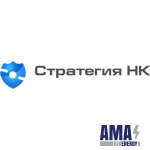Acoustic Emission Control
Employees of Strategy NK LLC are specialists of the III and II level of qualification by the AE method and are actively involved in the development of the acoustic emission method. Successful steps are being taken to unify the preparation and conduct of work, industry-specific control methods are being developed, and mechanisms for automatically assessing the degree of danger of AE sources are being applied. Many years of experience in monitoring, as well as studying the nature of the propagation of acoustic waves in various objects, provide a high probability of detecting developing defects.
The duration of the operation of hazardous production facilities (OPO) increases the likelihood of emergency failures associated with the formation of operational defects. And the tendency to increase turnaround intervals establishes a new level of security for fire protection.
The use of AE control is:
- prediction of structural failure on the basis of determining the moment of defect nucleation and determining the rate of its development;
- safety during commissioning (acceptance testing) after construction, installation or repair;
- technical diagnostics, determination of the current technical condition, including during the technical examination and examination of industrial safety (during periodic strength tests) with decommissioning;
- assessment of the current state of the facility in monitoring mode (without decommissioning);
- leak test of the object, location of the leak.
A special role is given to acoustic and pneumatic testing of pneumatic and hydraulic tests because of the possibility of detecting the early stages of crack formation prior to failure. This ensures test safety.
Scopes of AE control:
- chemical, petrochemical and oil refining industries;
- oil and gas industry;
- metallurgy industry;
- gas distribution and gas consumption facilities;
- pressure equipment (boiler supervision);
- lifting facilities.
Advantages of acoustic emission control:
1) the application of the AE method in assessing the technical condition of hazardous production facilities allows you to control the facility in full, including hard-to-reach and inaccessible sections (underground pipelines, objects in isolation, tanks, column and tank equipment);
2) AE control allows to detect damage to the facility long before the onset of the limit state, and therefore, makes it possible to plan repair measures and take preventive measures to prevent an emergency;
3) in contrast to the scanning methods of ND, the method of acoustic emission does not require careful preparation of the surface of the test object;
4) reduction of equipment downtime due to the possibility of AE monitoring without dismantling the equipment and without decommissioning it, which reduces the cost of technical diagnostics.
According to the requirements of paragraph 168 of the Federal State Standard of Industrial Designs and Regulations (approved by Order No. 116 of 03.25.2014), hydraulic testing of pipelines with a working pressure of not more than 10 MPa, as well as vessels, is allowed to be replaced by a pneumatic test (compressed air, inert gas or a mixture of air with inert gas) at subject to simultaneous control by acoustic emission.
Our company provides acoustic emission monitoring services for pneumatic strength tests of process pipelines, vessels and apparatuses operating under pressure, as well as any other technological equipment (low and high pressure process pipelines, capacitive equipment, cryogenic equipment, ammonia refrigeration units, vacuum equipment, press equipment and much more).

